 |
Foodoric and associated companies are chemicals manufacturing companies operated in India USA UAE Europe Asia and other countries around the world. The associates have one or more of certifications like ISO-9001, ISO-14001, ISO-22000:2005, FSSC 22000; OHSAS 18001; Kosher and Halal Certified; HACCP, FSSAI and FDA - GMP approval. Buyers are assured of good quality and CIF wholesale and retail price for supplies of our Calcium Levulinate. |
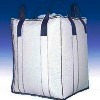
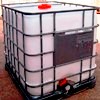
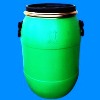
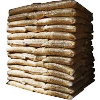
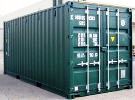

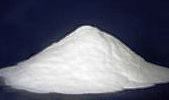
Calcium Levulinate USP BP Grade Manufacturers Suppliers
Calcium Levulinate
USP BP Grade

Calcium Levulinate CAS Number: 5743-49-7 for Dihydrate and 591-64-0 for Anhydrous, Molecular Formula: C10-H14-Ca-O6•(H2O)2 for Dihydrate and C10-H14-Ca-O6 for Anhydrous, Molecular Weight: 306.32 for Dihydrate and 270.30 Anhydrous
Calcium Levulinate USP Grade Specifications
C10H14CaO6.2H2O -- 306.32
Pentanoic acid, 4-oxo-, calcium salt (2:1), dihydrate.
Calcium levulinate (1:2) dihydrate [CAS 5743-49-7].
Anhydrous 270.30 [CAS 591-64-0].
Calcium Levulinate contains not less than 97.5 percent and not more than 100.5 percent of C10H14CaO6, calculated on the dried basis.
Identification—
A: A solution (1 in 10) responds to the tests for Calcium.
B: To a solution of 0.5 g in 5 mL of water add 5 mL of 1 N sodium hydroxide, and filter. To the filtrate add 5 mL of iodine: a precipitate of iodoform is produced.
Melting range: between 119 and 125 .
pH: between 7.0 and 8.5, in a solution (1 in 10).
Loss on drying: Dry it at a pressure not exceeding 5 mm of mercury at 60 for 5 hours: it loses between 10.5% and 12.0% of its weight.
Chloride: A 1.0-g portion shows no more chloride than corresponds to 1.0 mL of 0.020 N hydrochloric acid (0.07%).
Sulfate: A 2.0-g portion shows no more sulfate than corresponds to 1.0 mL of 0.020 N sulfuric acid (0.05%).
Heavy metals: 0.002%.
Reducing sugars: Dissolve 0.50 g in 10 mL of water, add 2 mL of 3 N hydrochloric acid, boil for about 2 minutes, and cool. Add 5 mL of sodium carbonate, allow to stand for 5 minutes, dilute with water to 20 mL, and filter. Add 5 mL of the clear filtrate to about 2 mL of alkaline cupric tartrate, and boil for 1 minute: no red precipitate is formed immediately.
Calcium Levulinate Dihydrate BP Ph Eur Grade
Ph Eur
C10H14CaO6,2H2O -- 306.3 -- CAS 5743-49-7
DEFINITION
Calcium di(4-oxopentanoate) dihydrate.
Content: 98.0 per cent to 101.0 per cent (dried substance).
CHARACTERS
Appearance: White or almost white, crystalline powder.
Solubility: Freely soluble in water, very slightly soluble in ethanol (96 per cent), practically insoluble in methylene chloride.
IDENTIFICATION
First identificationı A, D, E.
Second identificationı B, C, D, E.
A. Infrared absorption spectrophotometry comparisonı calcium levulinate dihydrate CRS.
B. Thin-layer chromatography.
Test solution: Dissolve 60 mg of the substance to be examined in water and dilute to 1 ml with the same solvent.
Reference solution: Dissolve 60 mg of calcium levulinate dihydrate CRS in water and dilute to 1 ml with the same solvent.
Plate: TLC silica gel plate.
Mobile phase: concentrated ammonia, ethyl acetate, water, ethanol (96 per cent) (10:10:30:50 V/V/V/V).
Application: 10 μl.
Development: Over a path of 10 cm.
Drying: At 100-105 °C for 20 min and allow to cool.
Detection: Spray with a 30 g/l solution of potassium permanganate. Dry in a current of warm air for about 5 min or until the spots become yellow. Examine in daylight.
Results: The principal spot in the chromatogram obtained with the test solution is similar in position, colour and size to the principal spot in the chromatogram obtained with the reference solution.
C. To 1 ml of solution S (see Tests), add 20 ml of a 2.5 g/l solution of dinitrophenylhydrazine in dilute hydrochloric acid. Allow to stand for 15 min. Filter, wash the precipitate with water. Dry the precipitate in an oven at 100-105 °C. The melting point is 203 °C to 210 °C.
D. It gives reaction of calcium.
E. Loss on drying (see Tests).
TESTS
Solution S: Dissolve 10.0 g in carbon dioxide-free water R prepared from distilled water and dilute to 100.0 ml with the same solvent.
Appearance of solution: Solution S is clear and not more intensely coloured than reference solution.
pH: 6.8 to 7.8 for solution S.
Oxidisable substances: To 1 ml of solution S, add 10 ml of water, 1 ml of dilute sulphuric acid and 0.25 ml of a 3.0 g/l solution of potassium permanganate. Mix. After 5 min, the violet colour of the mixture is still visible.
Sucrose and reducing sugars: To 5 ml of solution S add 2 ml of hydrochloric acid and dilute to 10 ml with water. Heat to boiling for 5 min and allow to cool. Add 10 ml of sodium carbonate solution. Allow to stand for 5 min, dilute to 25 ml with water and filter. To 5 ml of the filtrate add 2 ml of cupri-tartaric solution and heat to boiling for 1 min. No red precipitate is formed.
Chlorides: Maximum 50 ppm.
Sulphates: Maximum 200 ppm.
Magnesium and alkali metals: Maximum 1.0 per cent.
To 10 ml of solution S, add 80 ml of water, 10 ml of ammonium chloride solution R and 1 ml of ammonia. Heat to boiling. To the boiling solution, add drop-wise 50 ml of warm ammonium oxalate solution. Allow to stand for 4 h, then dilute to 200 ml with water and filter. To 100 ml of the filtrate, add 0.5 ml of sulphuric acid. Evaporate to dryness on a water-bath and ignite to constant mass at 600 ± 50 °C. The residue weighs a maximum of 5.0 mg.
Heavy metals: Maximum 10 ppm.
Loss on drying: 11.0 per cent to 12.5 per cent, determined on 0.200 g by drying at 105 °C.
Pyrogens: If intended for use in the manufacture of parenteral dosage forms without a further appropriate procedure for the removal of pyrogens, it complies with the test for pyrogens. Inject per kilogram of the rabbit's mass 4 ml of a solution containing per millilitre 50 mg of the substance to be examined.

Calcium Levulinate Manufacturers Suppliers:
Foodoric Group of Cos
India, USA, UAE, Europe
e-mail: info@foodoric.com

Copyright
Last
14 March, 2022
Calcium Levulinate Suppliers, Exporters, Importers, Manufacturers offering good CIF wholesale and retail prices, quality and online information.
A jackal woke up early in the morning and went in to the plains. He looked at his long shadow in the rising morning sun and said to himself, "I must have a camel for my meal today".
He kept moving around till noon and it was getting hot and the jackal was tired. He was also hungry and thirsty. He looked at his small shadow in the mid-day sun. He murmered, "I was only joking about the camel, a mouse will do".